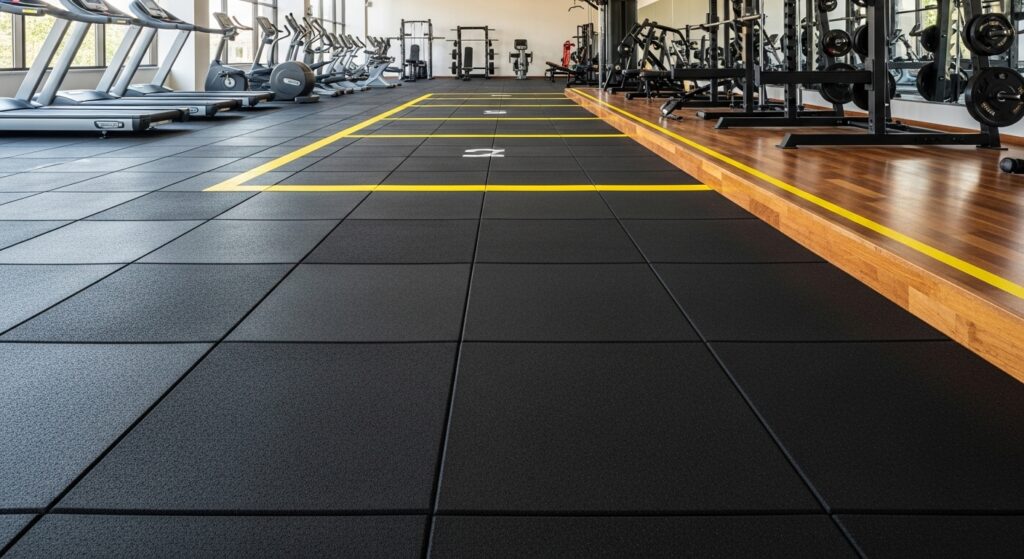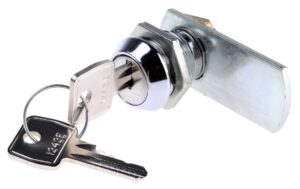
Creating an effective workout space requires more than just equipment and motivation. The flooring beneath your feet plays a crucial role in workout safety, equipment protection, noise reduction, and overall exercise experience. Whether you’re building a commercial gym, setting up a home workout area, or renovating an existing fitness facility, selecting appropriate gym flooring is essential for functionality, durability, and user satisfaction. Understanding the various flooring options, their specific benefits, and how they match different workout types enables informed decisions that enhance your fitness environment while protecting your investment in equipment and property.
Why Gym Flooring Matters
Standard residential or commercial flooring is inadequate for fitness activities. Dropped weights can crack tiles, dent hardwood, or damage concrete surfaces. High-impact exercises stress joints when performed on hard, unyielding surfaces without proper cushioning. Equipment can scratch, gouge, or permanently mark inappropriate flooring materials. Sweat and moisture from intense workouts can damage flooring not designed for gym environments. Proper gym flooring addresses these challenges while providing shock absorption that protects joints during high-impact activities like jumping, running, and plyometrics.
Beyond protection, gym flooring significantly impacts workout quality and safety. Appropriate cushioning reduces fatigue during extended training sessions, enabling longer, more productive workouts. Non-slip surfaces prevent accidents during dynamic movements or when floors become wet from perspiration. Sound dampening properties reduce noise transmission to neighboring spaces, particularly important in apartment buildings, multi-story facilities, or home gyms where noise complaints can be problematic. The right flooring creates professional, motivating atmospheres that encourage consistent training and pride in workout spaces.
Rubber Flooring: The Gold Standard
Rubber flooring In Dubai represents the most popular choice for gyms due to its exceptional durability, shock absorption, and versatility. Available in tiles, rolls, and mats, rubber accommodates various installation preferences and space configurations. High-density rubber effectively absorbs impact from dropped weights, protecting both equipment and subfloors. The material’s natural resilience provides comfortable cushioning for floor exercises, stretching, and bodyweight movements while remaining firm enough for stable weightlifting and equipment placement.
Rubber flooring excels in durability, withstanding heavy use from constant foot traffic, rolling equipment, and dropped weights without showing significant wear. The material resists moisture, sweat, oils, and most cleaning chemicals, making maintenance straightforward. Textured surfaces provide excellent traction even when wet, reducing slip hazards during intense workouts. Rubber’s sound-dampening properties significantly reduce noise from weights, equipment, and foot traffic. While rubber flooring typically costs more than basic options, its longevity and performance justify the investment for serious fitness environments.
Foam Flooring: Budget-Friendly Comfort
Foam flooring tiles offer affordable, lightweight alternatives particularly popular for home gyms , yoga studios, and low-impact workout areas. Interlocking foam tiles install easily without adhesives or special tools, making them ideal for renters or those desiring temporary installations. The soft, cushioned surface provides excellent comfort for floor exercises, yoga, Pilates, stretching, and bodyweight training. Foam’s lightweight nature allows easy reconfiguration or removal when spaces require different uses.
However, foam flooring has limitations that restrict its applications. The soft material compresses significantly under heavy equipment, creating unstable surfaces for weightlifting. Dropped weights can tear, dent, or permanently damage foam tiles. The material wears more quickly than rubber under heavy use, developing compression marks and losing resilience over time. Foam is best suited for light-intensity workouts, stretching areas, children’s fitness spaces, or supplementary flooring in designated zones within larger gyms. For dedicated weight training or high-impact activities, denser materials provide superior performance and longevity.
Vinyl and PVC Flooring: Versatile Performance
Vinyl and PVC gym flooring offers middle-ground solutions balancing cost, performance, and aesthetics. These synthetic materials come in tiles, planks, and rolls featuring various colors, patterns, and textures. Vinyl flooring provides moderate shock absorption suitable for cardio equipment, functional training, and general fitness activities. The smooth, non-porous surface resists moisture and cleans easily with standard cleaning products. Many vinyl options incorporate textured surfaces enhancing traction during workouts.
High-quality vinyl gym flooring withstands moderate impacts and heavy foot traffic, though it’s less durable than rubber for weight room applications. The material works well for multi-purpose spaces, group fitness studios, cardio zones, and areas where aesthetics matter alongside functionality. Vinyl accommodates various design preferences with options mimicking wood, stone, or contemporary patterns creating visually appealing fitness environments. While not ideal for serious weightlifting areas where heavy drops occur regularly, vinyl provides practical, attractive solutions for many gym applications at reasonable costs.
Specialized Weightlifting Platforms
Dedicated weightlifting areas benefit from specialized platforms designed specifically for Olympic lifts, powerlifting, and heavy strength training. These platforms typically combine dense rubber sections surrounding central wooden sections. The wood provides stable, non-compressing surfaces for lifting positions, while rubber borders absorb impact from dropped barbells during Olympic lifts. Platform construction ensures proper weight distribution and equipment protection while maintaining safe, stable lifting surfaces.
Weightlifting platforms range from simple DIY constructions using plywood and rubber mats to professionally manufactured units with reinforced construction and precision engineering. Commercial gym platforms often feature elevated designs with integrated storage, adjustable components, and premium materials supporting years of heavy use. Home gym enthusiasts can build effective platforms using affordable materials following established designs. Whether purchased or built, dedicated platforms significantly enhance weightlifting safety and performance while protecting floors and equipment from damage.
Turf Flooring: Functional Training Surfaces
Artificial turf has become increasingly popular in gyms, particularly for functional training areas, sled pushing zones, and athletic conditioning spaces. The textured surface provides excellent traction for explosive movements, agility drills, and speed training. Turf withstands heavy sleds, prowlers, and other functional training equipment without showing wear. The material’s appearance creates visually distinct training zones within facilities, designating areas for specific workout types.
Quality gym turf features dense, durable construction designed for continuous heavy use beyond residential landscaping turf. Backing materials provide cushioning and stability while preventing shifting during intense activities. Turf resists moisture, cleans easily, and maintains appearance through extended use. The material works particularly well in sports performance facilities, CrossFit gyms, and training spaces emphasizing athletic development. While less suitable for traditional weightlifting or general fitness equipment, turf excels for its intended functional training applications.
Installation Considerations
Proper installation significantly impacts gym flooring performance and longevity. Interlocking tiles and mats offer simple DIY installation requiring minimal tools or expertise. These systems work well for temporary or semi-permanent installations where future removal or reconfiguration might be necessary. Roll-out rubber flooring provides seamless appearances but may require adhesive for permanent installation, particularly in commercial settings where shifting could create safety hazards.
Subfloor preparation is crucial for optimal performance. Clean, dry, level surfaces ensure proper flooring contact and prevent premature wear from uneven pressure points. Moisture barriers protect flooring from concrete subfloor moisture transmission that can cause mold, odors, or material degradation. Commercial installations often benefit from professional installation ensuring proper material selection, subfloor preparation, and installation techniques meeting safety standards and building codes. Home gym owners can successfully install many flooring options following manufacturer guidelines and basic preparation procedures.
Maintenance and Longevity
Proper maintenance extends gym flooring lifespan while maintaining safe, attractive workout environments. Regular sweeping or vacuuming removes dirt and debris that can abrade surfaces or become embedded in textured materials. Mopping with appropriate cleaning solutions removes sweat, oils, and bacteria accumulating from use. Rubber flooring tolerates various cleaners, though harsh chemicals should be avoided. Foam and vinyl require gentler cleaning approaches preventing material breakdown.
Preventive maintenance includes promptly addressing spills, repositioning equipment periodically to distribute wear, and using protective mats under particularly heavy equipment. Quality gym flooring properly maintained lasts 10 to 20 years in commercial settings and even longer in home gyms with lighter use. The investment in durable flooring combined with consistent maintenance provides long-term value far exceeding cheaper alternatives requiring frequent replacement.
Making Your Choice
Selecting gym flooring requires evaluating specific workout types, space characteristics, budget constraints, and aesthetic preferences. Serious weightlifting demands rubber flooring or specialized platforms. Multi-purpose fitness spaces benefit from versatile vinyl or rubber tiles. Yoga and stretching areas can utilize foam or thin rubber. Functional training zones often incorporate turf or heavy-duty rubber. Budget-conscious home gym builders find acceptable performance in mid-range rubber tiles, while commercial facilities justify premium materials through heavy use demands.
Consider your priorities when making decisions. Durability matters most for heavy-use commercial settings. Comfort and aesthetics might prioritize in home environments. Noise reduction becomes critical in shared buildings. Whatever your specific needs, appropriate gym flooring protects investments, enhances workouts, and creates safe, motivating spaces supporting fitness goals for years to come.



